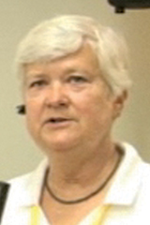Three decades after the disaster of Flight 427, some of the first to respond remember as if it were yesterday.
They included firefighters from Hopewell Township Volunteer Fire Department, the man who would one day become the chief for Pittsburgh’s Bureau of Fire and a US Air employee who raced to the scene from his home.
"To all units, station 92, 91, 36, 37, 38. Reported plane down, commercial airliner," a dispatcher said on Sept. 30, 1994.
At the time, no one knew more than 130 people were killed in what is Pennsylvania's deadliest plane crash, WTAE reported.
"In my mind, I'm thinking, this is an Ultralight. This is a Cessna," Pittsburgh Bureau Of Fire Chief Darryl Jones said.
Back then, Jones was captain of the Aliquippa Fire Department, and he was in the last moments of a several-day shift.
"Then the tones hit across the radio, dispatching us. As I go around the bend on Kennedy Boulevard. I can see the header, the smoke header coming out. I was like, oh boy, this is not a Cessna or an Ultralight, and I had this immediate adrenaline dump. And, I started shaking. So I'm driving the rig, and my leg is shaking, so the rig's bouncing."
Hopewell Township Volunteer Fire Department was also getting a call: "Hopewell — report of a commercial airliner down. Area of Green Garden Plaza."
Dan Canton, president of the department, said he jumped in the back seat while then-Chief Gary Van Newkirk drove.
The flames were like about 50, 60 feet in the air from all of the fuel that was on fire, trees on fire," Newkirk said.
Jones remembers looking down at the wreckage: "It was a man's hand, and just the hand. And he had a class ring on in his hand. Just then, we were able to look up and then you can see everything. It was like a veil was lifted on you. You can all of a sudden recognize everything. There was debris. There was body parts."
Suddenly, there were crews from everywhere.
David Bufalini, a former US Airways employee, rode to the site with his volunteer firefighter neighbor. He still remembers someone yelling to them as they moved in.
"He yelled, 'Everybody stop! Everybody, look down! Be careful where you're walking. Be careful what you touch.' You know, 'be aware.' And that's what I looked down. I looked, and I saw a seat back, and I yelled. I turned, and I yelled, 'Does anybody know what kind of plane this was?' I needed that— somebody to say what I was thinking — that this was a US Air plane."
Bufalini realized he was standing at not only an airline crash with no survivors but at the gravesite of his co-workers.
“I knew the flight attendants — never met them in person, but I talked to them before on the phone. So I'm dealing with all of this and everything I saw, trying to process everything."
When Bufalini realized what he was in the middle of with no experience as a first responder, he backed out of the crash site.
"I saw more than I wanted to see. I heard more than I wanted to hear. I smelled more than I wanted to smell."
However, inside the scene, first responders were struggling as well.
"What we're taught is to save lives and protect property. And once we got in there, there's nothing we could do. It's basically— it turned into a recovery and just protect perimeters from fire," Canton said.
“I can see— remember seeing the engines, the landing gear, the tail section," Jones said.
The two firefighters spent hours working among the debris and casualties.
Chief Newkirk was running the command center a mile away at Green Garden Plaza. His job: Keep track of crews, where they were and what needed to be done next.
"A lot of it are personal memories of what I did — Who was on the truck with me," Newkirk said, sharing his memories with us that he has kept for 30 years.
Then there are the memories and reminders you can’t see: "The smell of diesel fuel was a big thing for me. I hate that smell."
Those are the reminders the first responders say are difficult with the images that stay with them.
"The sleeve was still off from the blouse, and she had this beautiful diamond ring and served her wedding band," Jones said. "It was tough. It was tough going through that..."





